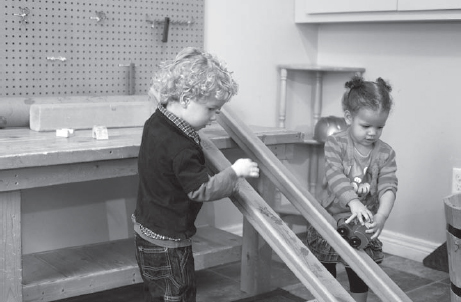![]()
Overview
Once upon a time, adults had to spend a lot of time ensuring that families had basic necessities like food and shelter. Back then, kids spent most of their time in mixed-age groups of peers, leading their own learning and solving their own problems as they played and explored.
Now it seems like there is always a well-intentioned adult hovering nearby, ready to swoop in and solve problems as they happen—or, just as likely, to clear a problem-free path for children to stroll down. If she’s not leaping in to stop Timmy from hitting Tina because he has that look on his face when Tina chooses not to share the markers, then she’s keeping him away from Tina entirely because he is a bad influence or too aggressive. Helicopter and snowplow adults mean well, but their efforts steal from children’s opportunities to struggle, think, act, and solve problems on their own. This means children have few real-life opportunities to practice problem solving.
We encourage you to swim against the tide and let kids solve their own problems whenever possible—when in doubt, let them work it out.

While stopping the conflict between Timmy and Tina may seem like the responsible thing to do—it keeps Tina from getting hit after all—it steals a learning opportunity from both children. Timmy misses out on the chance to choose a different course of action, and just because he has a reputation as a hitter does not mean he is always going to be the kid who hits. He misses the chance to solve the problem by waiting his turn to use the markers or choosing to use the crayons instead. And, if he chooses to hit, stopping it before it happens takes away his opportunity to experience the consequences of hitting—Tina’s tears, the adult’s disapproval, and so on.
Tina loses out too. She misses a chance to negotiate with Timmy (“I’ll be done with the markers as soon as I color in this space monster. Then you can have them,” or “I only need green—you can have the rest of them.”). She also misses the chance to practice some resiliency and assertiveness (“NO, Timmy! It’s not polite to hit people! I don’t like that!”).
Practice in the real-world ebb and flow of relationships is the only way we humans get good at solving interpersonal and other problems. Taking away children’s chances to practice solving problems steals their opportunity to learn skills they will use their whole lives.
How to Support It
1. Step back a bit. If you have to hover, do it from a bit farther away. Be close enough to stop any real danger or injury, but as much as you can, let kids have enough space to engage in and manage their own problems.
2. Create a healthy emotional environment. Kids who feel safe, secure, loved, trusted, and valued are better equipped to handle problems that need solving.
3. Create problems. Once in a while you can set up problems for children to solve. For example, let them hunt down a “lost” pair of shoes or move a heavy table. This gives them a chance to strategize and work as a team to rectify the problem.
4. Inform parents. Discuss with parents the value in letting children solve child-sized problems, and support them in getting on board with the idea. Help them realize that when children solve small problems today, they are better prepared for solving adult-sized problems later in life.


Questions to Ask Yourself
1. How did you feel as a child when someone swooped in and solved a problem you were capable of handling?
2. How often do you hover or plow paths for the children in your care?
3. What one small step could you take to better support children as problem solvers?
Notes
In the next chapter you’ll clap for clips . . .